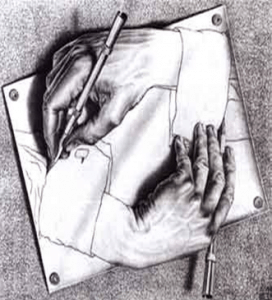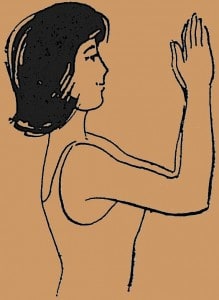Lefthander is a person, who preferably enjoys using a left hand for personal needs, cooking and similar cases. The hand used for writing, is not an accurate indicator of left-(right-) handedness. So, a lot of left-handers write with their right hand, using left hand for most other tasks.

Alexander the Great, Julius Caesar, Da Vinci, Napoleon, Charlie Chaplin, Lewis Carroll, Michelangelo, Albert Einstein – what does unit these people, besides genius?
They all are left-handers.
The percentage of gifted left-handers people is unusually high. It is difficult to name the field of art, politics or sports, where the left-handers would not have staked the first place. The music has Mozart and Beethoven, painting – Leonardo da Vinci, Raphael, Rubens. The inimitable Robert de Niro, charming Julia Roberts, “Die Hard” Bruce Willis, adorable Tom Cruise, unbeaten Sylvester Stallone are also from the category of left-handers. All recent U.S. presidents – Reagan, both Bush and Clinton – are entirely left-handers.
From the first months of life, children are separated into left-and right-handers. Genetics, pregnancy and childbirth affect the left-handedness.
There are several types of left-handers:
- Genetic (9-11%) are inherited left-handers. In 2007 a team of scientists led by experts from Oxford University has discovered a LLRTM1 gene, determining whether a person left-hander. The same gene, according to scientists, and increases the chances of mental disorders, particularly schizophrenia. According to the Genshvind theory, high level of testosterone in the mother’s blood during pregnancy may lead to the birth of a left-handed child.
- Compensatory (12-13%) are born with an unfavorable course of pregnancy and childbirth. In their history of birth trauma is often found. Their number in developed countries in recent years is increasing, as sociologists suggest, because of the increasing number of late pregnancy. If the mother gives birth after 40 years, the chances of birth of left-handers increases to 128% compared to 20-year-olds.
- Arte left-handers (2-3%) injured their right hand, and they have to develop their left hand. Left-handedness was researched actively after World War II, when large numbers of people lost in the fighting their arm or wrist. In 1918 the Frenchman Albert Charles published a book addressed to the disabled, who had returned from the war, “How to write with left hand”.
- Imitative (about 1%) most often occur in families where parents are left-handers. Kids just copy them. This is the only category of left-handers, whom it is a sense to retrain, carefully weighing the pros and cons, and after consultation with a specialist. According to statistics, people who use only right arm – 40%, and the left – about 1% …
As for the learning process the right hemisphere provides creative thinking, orientation in space and sensory perception of the world, while the left is responsible for abstract thinking and verbal-logical character of the cognitive process. Despite the specialization of the brain hemispheres, it functions as a unit because of hemispheric interaction. With the dominance of the left hemisphere a person is characterized by a tendency to think logically, generalizations. Right-brain people are more emotional, with a strong imagination. Moreover, about a half of humanity belongs to these two types, while the rest part does not have a strongly pronounced dominance of the hemispheres.
Below are some ways that help to determine the predominant left or right hemisphere of the child:
1) Cross your arms in a “Napoleon posture”. The hand, which will be on top, is your leading.

2) Observe which hand is on top when you applaud.

3) Put the palms of your hands flat, close to each other, fingers of leading hand are usually a few millimeters longer.

4) Pick up a pencil. Select the object and look at it through the tip of a pencil. Close one eye, then another. If the target moves with a closed left eye, it is the leading, if with the right one, the leading eye is right.
What should always the adult person keep in mind while training left-handers?
- Left-handers are characterized by a deliberation with an individual stupor at the beginning of any activity, and it should not be subject to reproach. You should not rush the left-hander in any case, in the bustle he made a large number of errors or stop at all. And in situations of stress this child often falls into such a panic that the successful completion becomes impossible. Therefore, he/she cannot be angry threaten, “just try to not write” – he/she will not write. Working with left-handers you need patience, a sense of humor, the desire to understand and tune in to another, desire to think and search for a way to win, not considering yourself as the ideal with your own ambitions.
- You need to create a calm friendly atmosphere during the classes, designed to reassure the majority of emotionally unstable and anxious kids, deeply experiencing their failures and mistakes. Such an environment will increase the chances of success.
- You should consider the main reason of left-handedness – that is different from right-handers the organization of the cerebral hemispheres activity, which is reflected in all activities of the child. Left-handers behave differently, trying every way to achieve clarity in interested questions, sometimes ignoring the tact and interrupting the interlocutor, regardless of age. Therefore, the overwhelming desire to refine and certain tediousness of a child with signs of left-handedness cause the teacher’s protest, if the adult does not explain the reason for mentioned behavior by the characteristics of mental activity of the child. Therefore, the lack of support makes the child to build her/his own logical chains, lead-in her/him to the correct solution.
- For training left-handers the breakdown of the entire system of acts on the successive operations is perfect. Left-hander should perceive all in a strictly sequential way, the omission in explaining of some stages remains unnoticed by right-hander, but will knock out of the rut the poor left-hander. So he tries in the peculiar way to structure the material.
- Use the creative tasks that support both interest and desire to win of inquisitive by nature left-handers, and show that it is not so simple as it might seem at first glance.
- It is necessary to maintain constant feedback with the child. Left-hander cannot learn something without realizing. He learns the material strictly in stages, and omission or misunderstanding of something leads to loss of the thread of reasoning. Having a strict algorithm and learn how to use it, you win the impotence of the child, but not admitting his mistakes, you deprive him of confidence.
For a child with its individual characteristics it is difficult to adapt to such a complex and rigorous world of school. Just help and explain the essence of his error, and then work out a given task – and the uncertainty will be gone. But the presence of feedback implies the child’s activity. There is a strict rule: left-hander should be taught to catch the moment when the confusion began, and to signal about it. Thus, it is possible to avoid tangling and unnecessary loss of time on explanation from the very beginning. It will be even better if the child will be able to express exactly what he did not understand, or at least indicate a complicated place. After all, the ability to ask questions requires to be learnt, and promptly escaped cry “I do not understand”,” rescues a child from a complete misunderstanding of the new material.
A case from practice: while explaining Roman numerals, when the whole class happily fill a table, writing in front of familiar Arabic numerals New Roman ones, and a record showing the way of the formation of Roman numerals to ten sported on the board, one of the most able girls stubbornly repeated her “I do not understand”. I have explained to her all options of the formation and illustration of “nasty” Roman numerals, and have already offered the latter effective way – to go to the board, when she cried in despair: “I know these numerals for a hundred years, WHERE should I write them?” She was a left-hander and did not notice the cells of the table!
Remember that your child needs special attention and approach, but not because he is left-hander, but because every child is unique!




